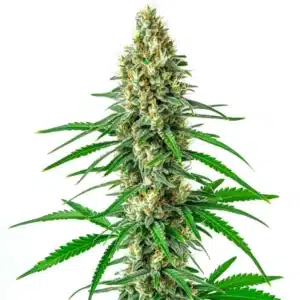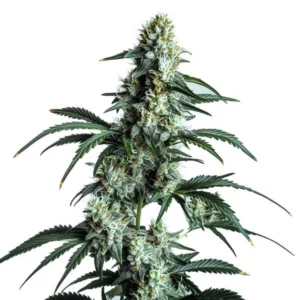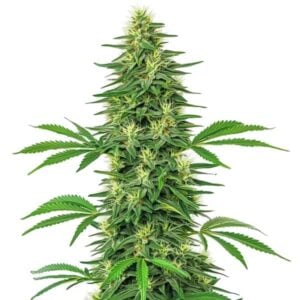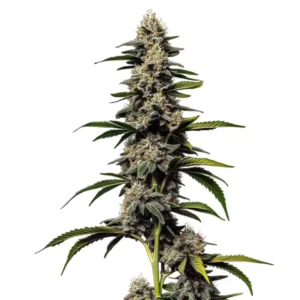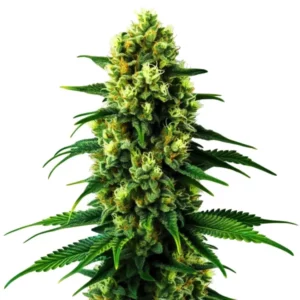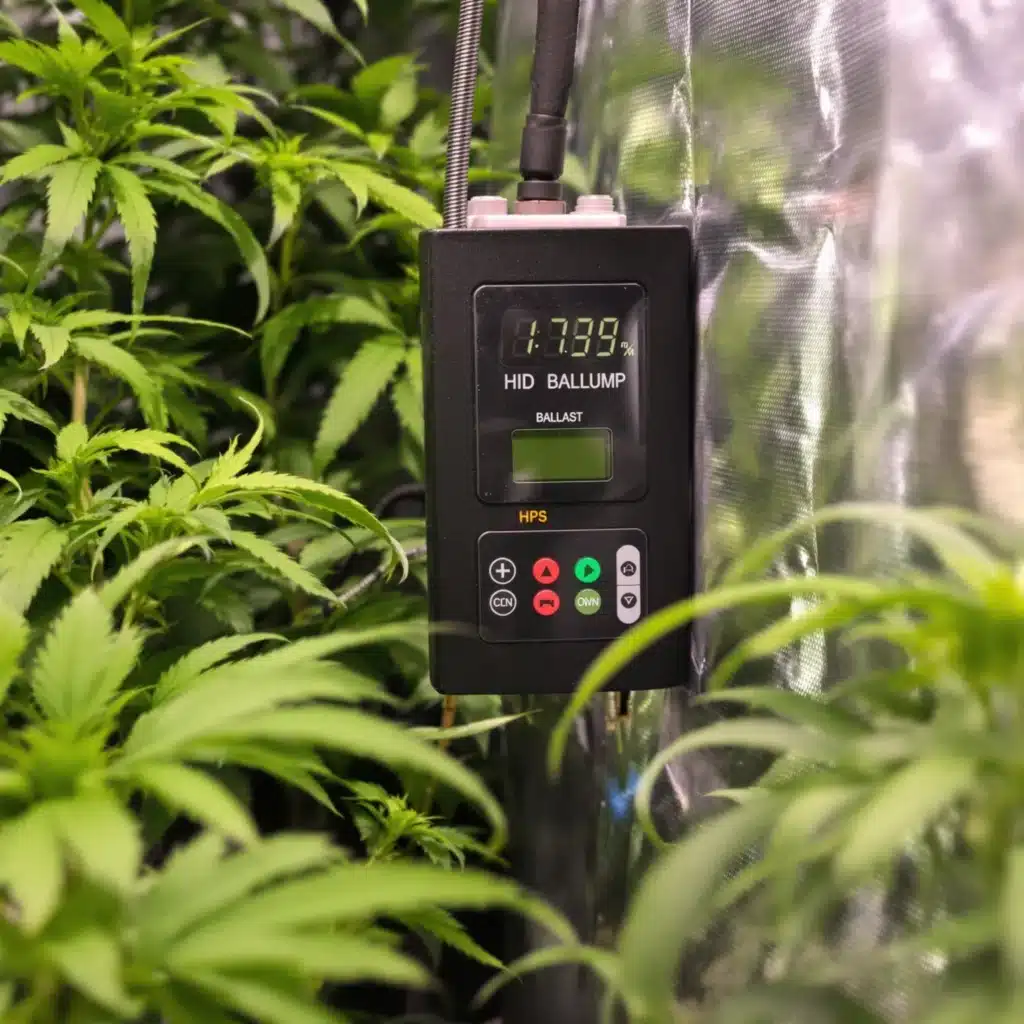
HID Lamp Ballast: The Key to Better Cannabis Yields
For cannabis cultivators aiming to maximize their harvests, an HID lamp ballast is an essential component of a successful grow setup. These devices ensure your lighting system performs optimally, providing the consistent and intense light cannabis plants need to thrive. Understanding how to choose, install, and maintain an HID lamp ballast can make all the difference in the quality of your yields.
What is an HID Lamp Ballast?
An HID lamp ballast is a critical component in high-intensity discharge (HID) lighting systems. It regulates the electrical current supplied to your HID lamp ballast, ensuring that it starts and operates safely and efficiently. Without a ballast, an HID lamp would draw excessive power, causing damage to the lamp and potentially creating a safety hazard.
Recommended Strains
Sour Cookies
|
|
THC | 15% - 20% (Medium) |
|
|
Type | Feminized |
|
|
Yield | Medium |
|
|
Phenotype | 45% Indica / 55% Sativa |
Sour Diesel
|
|
THC | 22% - 25% (Medium) |
|
|
Type | Feminized |
|
|
Yield | High |
|
|
Phenotype | 30% Indica / 70% Sativa |
The Primary Function of a HID Lamp Ballast in Lighting Systems
The ballast serves two main purposes. First, it provides the initial surge of electricity required to ignite the lamp. HID lamps, such as metal halide (MH) and high-pressure sodium (HPS), require a high voltage to start. Once the lamp is ignited, the ballast limits the electrical current to ensure steady operation.
Second, the ballast protects the lamp and the rest of the electrical system from power fluctuations. By regulating voltage and current, the ballast prevents damage to the lamp and maintains consistent light output. This stability is essential for cannabis cultivation, as fluctuating light levels can stress plants and reduce yields.
Differences Between Electromagnetic and Digital Ballasts
There are two primary types of HID lamp ballasts: electromagnetic and digital. Electromagnetic ballasts use a core and coil to regulate power. While reliable and cost-effective, they are bulky and can produce heat and noise during operation.
Digital ballasts, on the other hand, are more advanced. They use electronic circuitry to regulate power, offering greater efficiency, quieter operation, and improved control over light output. For cannabis growers, digital ballasts are generally the preferred option due to their compatibility with both MH and HPS lamps and their ability to adjust wattage for different growth stages.
Promos & Deals
The Importance of Ballasts in Cannabis Cultivation
In cannabis cultivation, the lighting system is one of the most critical aspects of a successful grow. HID lamps are popular among growers for their intensity and spectrum, but they require ballasts to function effectively. A good ballast not only ensures your lights operate safely but also optimizes plant growth and energy efficiency.
Voltage Regulation and Equipment Protection
Cannabis grows are often sensitive to power fluctuations, especially when using HID lighting systems. A reliable ballast stabilizes voltage, protecting both the lamp and the surrounding electrical equipment from damage. This protection extends the lifespan of your grow lights and reduces the risk of costly repairs.
Without proper voltage regulation, HID lamps can flicker or fail prematurely, disrupting the light cycle and stressing your cannabis plants. A ballast ensures your plants receive consistent light, promoting steady growth and reducing the likelihood of environmental stress.
Optimizing the Performance of HID Lamp Ballast
HID lamp ballast are known for their ability to provide intense light that mimics the natural sunlight cannabis plants crave. However, they must operate within specific parameters to deliver this performance. A ballast ensures the lamp receives the correct amount of power, optimizing brightness and spectrum.
For cannabis growers, this translates to better vegetative growth, robust flowering, and higher cannabinoid production. With a quality HID lamp ballast, you can ensure your grow lights perform at their best, giving your plants the energy they need to produce top-tier buds.
Types of Ballasts for HID Lampast Lamps
Not all ballasts are created equal. Choosing the right ballast for your grow space involves understanding the different types available and their features. Both electromagnetic and digital ballasts have their own advantages, depending on your specific needs.
Electromagnetic Ballasts: Features and Benefits
Electromagnetic ballasts are the traditional choice for HID lighting systems. They are durable, reliable, and relatively inexpensive. These ballasts operate using a core and coil system, which generates a magnetic field to regulate electrical current.
While electromagnetic ballasts are effective, they have some drawbacks. They can be bulky, generate heat, and produce a humming noise during operation. Despite these limitations, they remain a viable option for budget-conscious growers or those with simpler setups.
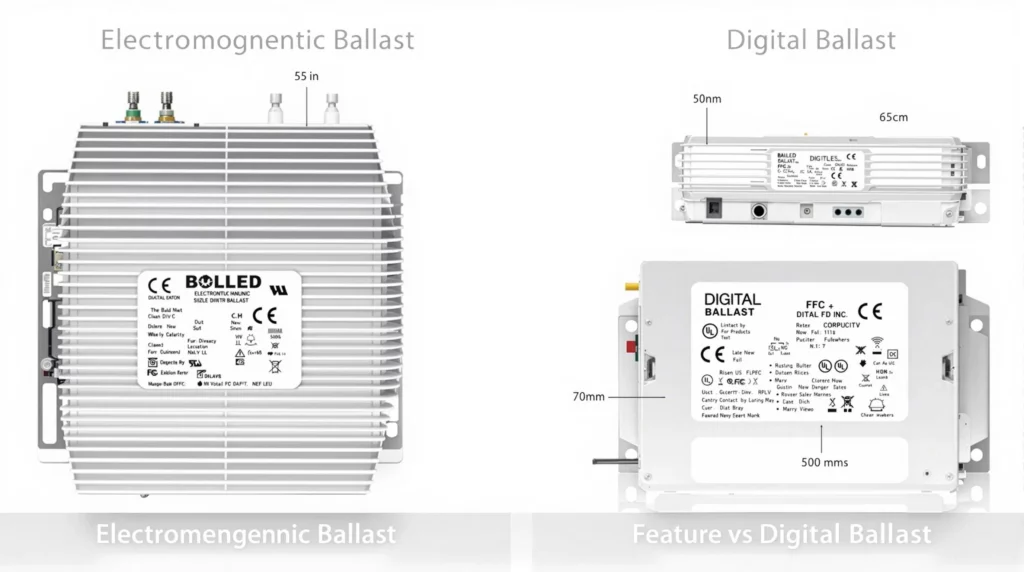
Digital Ballasts: Features and Why They’re Better for Cannabis
Digital ballasts represent the modern evolution of HID lighting technology. They use electronic circuits to regulate power, offering superior performance compared to their electromagnetic counterparts. Digital ballasts are more compact, quieter, and energy-efficient, making them ideal for cannabis cultivation.
One of the standout features of digital ballasts is their ability to adjust wattage. This allows growers to use the same ballast for multiple lamp types and adjust the light intensity for different growth stages. For instance, you can reduce wattage during the seedling stage and increase it during flowering to maximize yields. Digital ballasts also produce less heat, reducing the risk of overheating in your grow space.
Compatibility with MH and HPS Lamps
HID lamp ballasts are typically designed to work with specific types of lamps, such as metal halide (MH) and high-pressure sodium (HPS). MH lamps are ideal for the vegetative stage of cannabis growth, as they emit a cool, blue spectrum of light that encourages leafy growth. HPS lamps, on the other hand, produce a warm, red spectrum that promotes flowering and bud development.
Digital ballasts are often compatible with both MH and HPS lamps, offering growers the flexibility to switch between lamp types as needed. This compatibility makes digital ballasts a versatile choice for cannabis cultivation, allowing you to optimize light output for every stage of the grow cycle.
How to Choose the Right Ballast for Your Grow
Selecting the ideal HID lamp ballast for your grow space requires careful consideration of several factors. The right ballast will enhance your lighting system’s efficiency, ensure compatibility with your equipment, and maximize your cannabis plants’ potential.
Appropriate Wattage for Your Grow Space
The first step in choosing a ballast is determining the wattage that best suits your grow space. Common wattage options for HID lamps include 250W, 400W, 600W, and 1000W. Smaller grow spaces benefit from lower wattage options, which generate less heat and require less energy. Larger spaces with more plants will need higher wattage to provide adequate light intensity.
Matching the ballast wattage to your lamp is essential. A mismatch can lead to reduced light output, shortened lamp life, or even damage to your equipment. Many digital ballasts offer adjustable wattage settings, allowing growers to fine-tune light intensity based on the growth stage and plant needs.
Compatibility Considerations with the Lamp
Not all ballasts are compatible with every type of HID lamp. It’s crucial to ensure that your ballast matches the type of lamp you plan to use, whether it’s metal halide (MH), high-pressure sodium (HPS), or a dual-purpose lamp. Check the manufacturer’s specifications for both the lamp and the ballast to avoid compatibility issues.
Digital ballasts are often the most versatile option, as they can work with a wide range of lamp types and wattages. Additionally, some digital ballasts have automatic detection features, which adjust settings based on the lamp type, simplifying the setup process and reducing the risk of errors.
Energy Consumption and Efficiency
Energy efficiency is a significant consideration for cannabis growers, as lighting systems can be one of the largest contributors to electricity costs. Digital ballasts are more energy-efficient than electromagnetic ballasts, using less power to achieve the same light output. This not only reduces operational costs but also minimizes heat generation, which can lower the need for additional cooling equipment.
When evaluating energy efficiency, look for ballasts with a high power factor rating. A power factor close to 1.0 indicates that the ballast uses electricity more effectively, converting more power into usable light for your plants.
Installation and Maintenance of HID Lamp Ballasts
Proper installation and maintenance of HID lamp ballasts are critical for ensuring the safety and longevity of your lighting system. Following best practices can prevent electrical issues, extend the lifespan of your ballast, and optimize your grow space’s performance.
Step-by-Step Guide to Installing an HID Lamp Ballast
- Read the Manufacturer’s Instructions: Always start by reviewing the installation manual provided with your ballast. This ensures you understand the specific requirements and safety precautions for your equipment.
- Choose a Suitable Location: Place the ballast in a cool, dry area away from excessive heat and moisture. Avoid mounting the ballast on surfaces that can vibrate or shift.
- Connect the Power Source: Use a grounded electrical outlet and the appropriate cord to connect the ballast to the power supply. Ensure that the power rating of the outlet matches the requirements of the ballast.
- Attach the Lamp and Reflector: Securely connect the lamp to the reflector and the reflector to the ballast using the recommended cables. Double-check all connections to ensure they are tight and secure.
- Test the System: Turn on the ballast and verify that the lamp ignites and operates correctly. Monitor the system for any unusual noise or flickering.
Safety Precautions to Avoid Electrical Issues
Working with electrical equipment always carries risks. To minimize hazards:
- Ensure all connections are secure and insulated.
- Avoid overloading electrical circuits.
- Use surge protectors to prevent damage from power spikes.
- Turn off and unplug the ballast before performing any maintenance or adjustments.
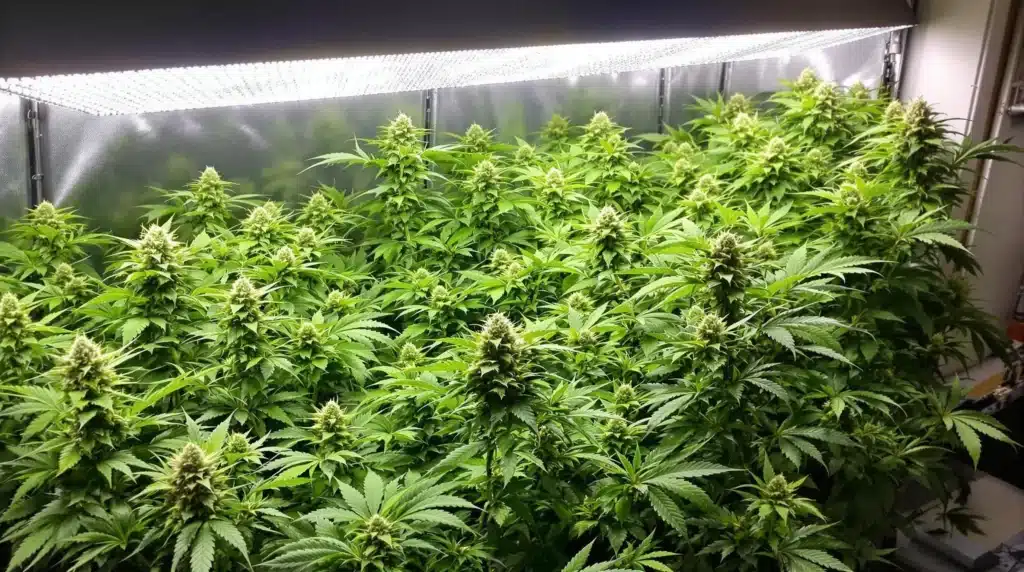
Tips to Extend the Lifespan of Your HID Lamp Ballast
To get the most out of your HID lamp ballast, follow these maintenance tips:
- Keep it Clean: Dust and debris can accumulate on the ballast, reducing its efficiency and causing overheating. Wipe it down regularly with a dry cloth.
- Monitor Heat Levels: Excessive heat can shorten the lifespan of your ballast. Use cooling fans or ventilation systems to maintain a stable temperature.
- Check Connections: Inspect all cables and connections periodically to ensure they remain secure and free of wear or damage.
- Replace Lamps Promptly: Using old or damaged lamps can strain the ballast. Replace your HID lamps according to the manufacturer’s recommendations.
Pros and Cons of Using HID Lamp Ballasts
HID ballasts are a popular choice among cannabis growers, but like any equipment, they have their strengths and weaknesses. Understanding these can help you decide if HID lighting is right for your grow.
Advantages in Terms of Light Output
HID lamps provide intense light that closely mimics natural sunlight, making them ideal for cannabis cultivation. Ballasts optimize this light output, ensuring that plants receive the consistent and powerful illumination they need to grow robustly. The ability to use both MH and HPS lamps with the same ballast adds flexibility, allowing growers to tailor their lighting to different growth stages.
Limitations Compared to Other Technologies Like LEDs
While HID lamp ballasts and lamps are effective, they have some drawbacks compared to modern lighting technologies like LEDs. HID systems consume more energy and produce more heat, which can increase cooling costs. Additionally, HID lamps have a shorter lifespan than LED fixtures, requiring more frequent replacements.
Despite these limitations, many growers continue to prefer HID lighting for its proven effectiveness and affordability. With a high-quality ballast, the performance and reliability of HID systems can outweigh their disadvantages, especially for larger grow operations.


